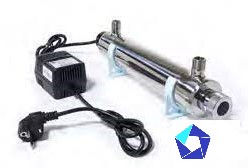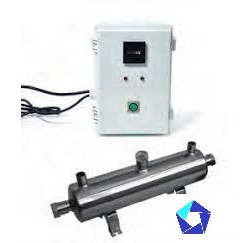BACTERIA
Bacteria and microorganisms present in water play a key role in the ecosystem of aquatic bodies, but can also have a serious impact on human and animal health if not controlled. These microorganisms are invisible to the naked eye, but their presence and diversity can be crucial to the safety and quality of the water we use.
Some of the microorganisms present in the water:
- Bacteria:
Bacteria are the most widespread microorganisms in water systems. Some bacteria are useful and help break down organic matter, but others can cause disease. Bacteria such as Escherichia coli (E. coli) may indicate faecal contamination and can cause gastrointestinal infections.
- Viruses:
Viral pathogens present in water can cause various diseases. They are usually smaller than bacteria and need a host to reproduce. The hepatitis A virus and noroviruses are examples of viruses that can be transmitted by water.
- Protozoa:
Protozoa are single-celled organisms that can be found in water. Giardia and Cryptosporidium are two protozoa that can cause intestinal infections in humans if ingested via contaminated water.
- Algae:
Algae are photosynthetic organisms that can multiply in water bodies. While some algae are useful as part of the ecosystem, algae over-propagation can lead to so-called algae reproduction. The algae bloom. This can cause water turbidity and produce toxins that can be harmful to human and animal health.
Controlling and removing microorganisms from water are key steps in ensuring safe and healthy water for consumption and use.
In water purification processes, various techniques, such as chlorine disinfection, UV radiation and filtration, are used to reduce concentration and eliminate pathogenic microorganisms. Regular water testing and monitoring of the presence of microorganisms is important to ensure compliance with water standards and protect community health.
Bacteria and microorganisms are present in different aquatic environments, depending on the conditions, contamination and type of aquatic body. Here are some places where we can most often find them:
- Water supply: Bacteria and microorganisms can occur in tap water supply systems, especially if there is a gap in pipelines or disinfection systems. This can include bacteria like E. coli and legionella.
- Natural waters: Waters such as rivers, lakes, streams and oceans abound in microorganisms. In these bodies of water we can find different types of bacteria, viruses and algae. If conditions are favorable, algae can multiply rapidly and cause “algae blooms”.
- Water systems: These include cooling water systems in buildings, swimming pools, spa-centers and other aquatic environments. Here, microorganisms like bacteria and algae are present and can grow rapidly if the water is not kept clean and disinfected.
- Natural reservoirs: Waters used for irrigation of agricultural areas and for industrial purposes may contain microorganisms. Untreated water coming from rivers and lakes can often contain pathogenic microorganisms.
- Rainwater and groundwater: Water collected from roofs or surfaces may contain microorganisms from the environment. Groundwater used as a source of drinking water can also contain bacteria and other microorganisms.
- Wastewater treatment systems: Wastewater from households, industry and commercial facilities undergoes purification to reduce the concentration of microorganisms and other pollution before being discharged back into the environment.
- Urban and rural water supply systems: Water systems in urban and rural areas may also contain bacteria and other microorganisms. Water from these systems can be susceptible to pollution if not maintained properly.
Control and monitoring of microorganisms in water is extremely important to ensure the safety of water for consumption and use and the protection of human health and the environment.
There are different technologies and methods used to prevent and control bacteria and microorganisms in water.
- Disinfection:
Use of disinfectants such as chlorine compounds (chlorination), ozone, ultraviolet (UV) radiation and chloramine. These techniques destroy or deactivate microorganisms and bacteria present in the water.
- Filtration:
Water filtration through different types of filtration media can remove microorganisms and bacteria from water. Microfiltration and ultrafiltration are technologies that use tiny pores to retain microorganisms.
- Oxidation:
Oxidation is the process of using oxygen or other oxidizing agents to destroy microorganisms. Oxidative agents such as ozone and hydrogen peroxide can be effective in controlling microorganisms.
- Ultrasound:
Ultrasonic technology uses high-frequency sound waves that create microscopic bubbles in water. These bubbles implode and create shock waves that can destroy microorganisms.
- On-site electrolysis:
This technique uses electrolysis to produce disinfectants such as hypochlorite or ozone. Electrochemical disinfection can destroy microorganisms and bacteria.
- Aeration:
Aeration involves adding air to the water to improve its quality and ensure the presence of oxygen that can hinder the growth of pathogenic microorganisms.
- Biological treatments:
Biological treatments use microorganisms that are naturally present in water to break down pollutants and control pathogenic microorganisms.
- Removal of pollution sources:
One of the most important steps in preventing microorganisms in water is the removal of sources of pollution such as fecal matter, waste materials and other potential sources of bacteria.
- Regular testing and monitoring:
Continuous testing of water for the presence of microorganisms and bacteria enables a quick reaction in case of abnormal results and helps maintain water safety.The combination of these technologies and methods can ensure high quality and safety of water for various purposes such as drinking, domestic, industrial and public facilities.



